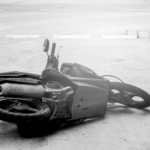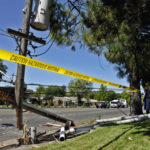The Law, Defences and Penalties for Dangerous Driving Occasioning Death in NSW

A teenager has been charged with five counts of dangerous driving occasioning death after five young people died in a horrific one car accident in Buxton in Sydney’s south-west on 6th September 2022..
All of the deceased were close friends and students of Picton High School. Three of the deceased were females – two aged 14 and one 15 and – and two were males aged 15 and 16 years.
As the local community mourns the tragedy, police crash investigation detectives are still trying to piece together what caused the incident.
At this stage, police believe that speed and overcrowding of the Nissan utility are likely factors.
The vehicle was registered to carry up to four people but had six inside when it ran off the road and hit a tree. The impact was so severe that the vehicle tore in half.
Emergency service officers and first responders who attended the described it as “extremely confronting”.
The 18-year old driver is the only survivor. He suffered non-life threatening injuries, has been refused bail and will appear in Picton Local Court later this week.
He has been charged with five counts of dangerous driving occasioning death, which is an offence under section 52A of the Crimes Act 1900 carrying a maximum penalty of 10 years in prison.
The offence of dangerous driving occasioning death in NSW
To establish the offence, the prosecution must prove beyond reasonable doubt that the defendant was:
- The driver of a motor vehicle
- Involved in an impact causing the death of another person, and
- Under the influence of alcohol or a drug, driving at a dangerous speed, or driving in a dangerous manner.
An ‘impact’ is defined as that which occurs:
- Between an object or a person and the vehicle,
- Between an object, including the ground, due to being thrown from the vehicle,
- With another vehicle or object in, on or near a person,
- With anything on or attached to the vehicle,
- With anything in motion through falling from the vehicle,
- When a vehicle overturns or leaves the road, or
- When a person falls or is thrown or ejected from the vehicle.
‘Aggravated circumstances’
The maximum penalty increases to 14 years in prison where the offence is committed in ‘circumstances of aggravation’.
These circumstances include where the defendant:
- Had a ‘prescribed concentration of alcohol’ in his or her bloodstream, which is a blood alcohol concentration of at least 0.15,
- Was ‘very substantially impaired’ by a drug or drugs, or
- Exceeded the speed limit by more than 45 km/h.
The prosecution bears the onus of proving a circumstance of aggravation beyond a reasonable doubt.
Defences to the charge
It follows from the above that a person must be found not guilty of dangerous driving occasioning death if the prosecution is unable to prove that the incident was attributable to the defendant
- Being under the influence of alcohol or drugs,
- Driving at an excessive speed, or
- Otherwise driving in a dangerous manner.
Similarly, the defendant cannot be found guilty of the aggravated offence if the prosecution is unable to prove that he or she:
- Had a blood alcohol concentration of at least 0.15 at the time of driving,
- Was ‘very substantially impaired’ by a drug or drugs at the time of driving, or
- Exceeded the speed limit by more than 45 km/h.
In addition to this, where the defendant is able to raise evidence of a valid legal defence, the prosecution must disprove beyond a reasonable doubt that the defence applies.
If it is unable to do so, the defendant must be acquitted of the charge; in other words, found not guilty.
Legal defences to dangerous driving include self-defence, duress, necessity and automatism – including involuntarily acting in an uncontrollable manner (such as having a sneezing fit) or falling asleep at the wheel in circumstances where you could not reasonably foresee this occurring (known as the ‘Jiminez defence’).
Most fatalities occur on country roads
Two-thirds of all road fatalities in New South Wales occur on country roads and, while many believe these accidents involve ‘city residents’, the statistics show that more than 70% of the incidents involve country residents.
It is no surprise that the majority of fatal collision are caused by drivers under the influence of alcohol or drugs, speed and/or fatigue, despite decades of campaigns to inform drivers of the dangers of these risk factors.
Young drivers have an increased crash risk because they tend to lack driving inexperience and are more likely to take risks on the road.
Going to court for a traffic offence?
If you are going to court for a traffic offence, call or email Sydney Criminal Lawyers anytime to arrange a free first consultation with an experienced, specialist traffic lawyer who will accurately advise you of your options, the best way forward, and fight for the optimal outcome in your specific situation.








